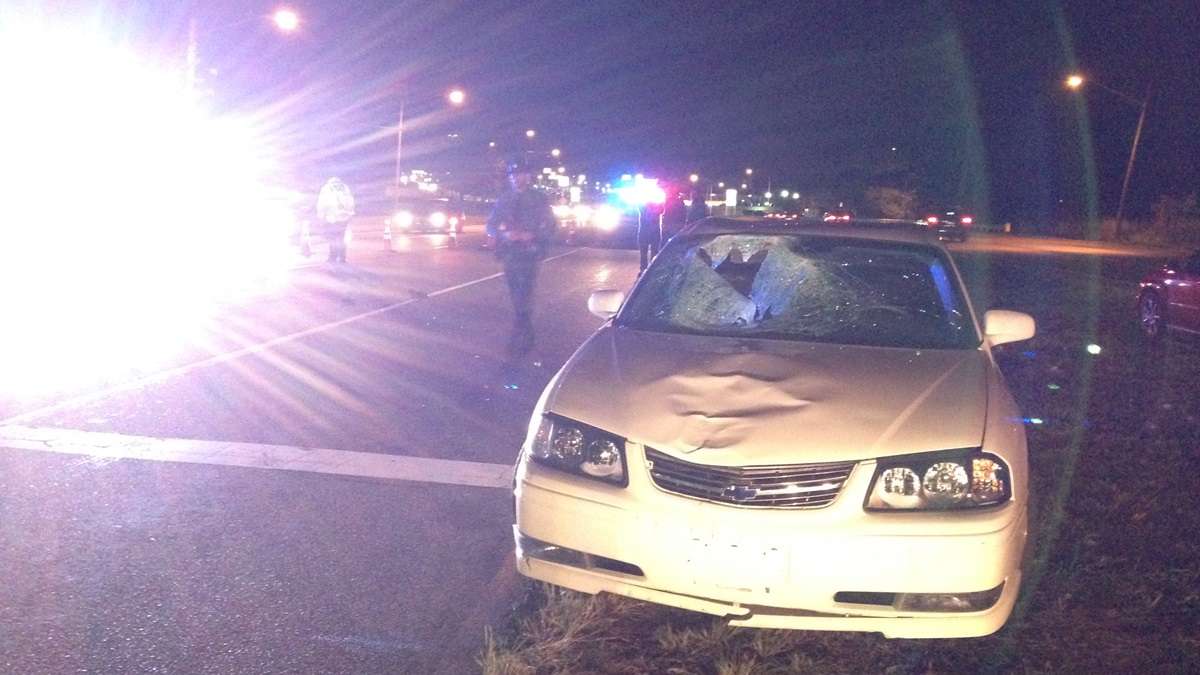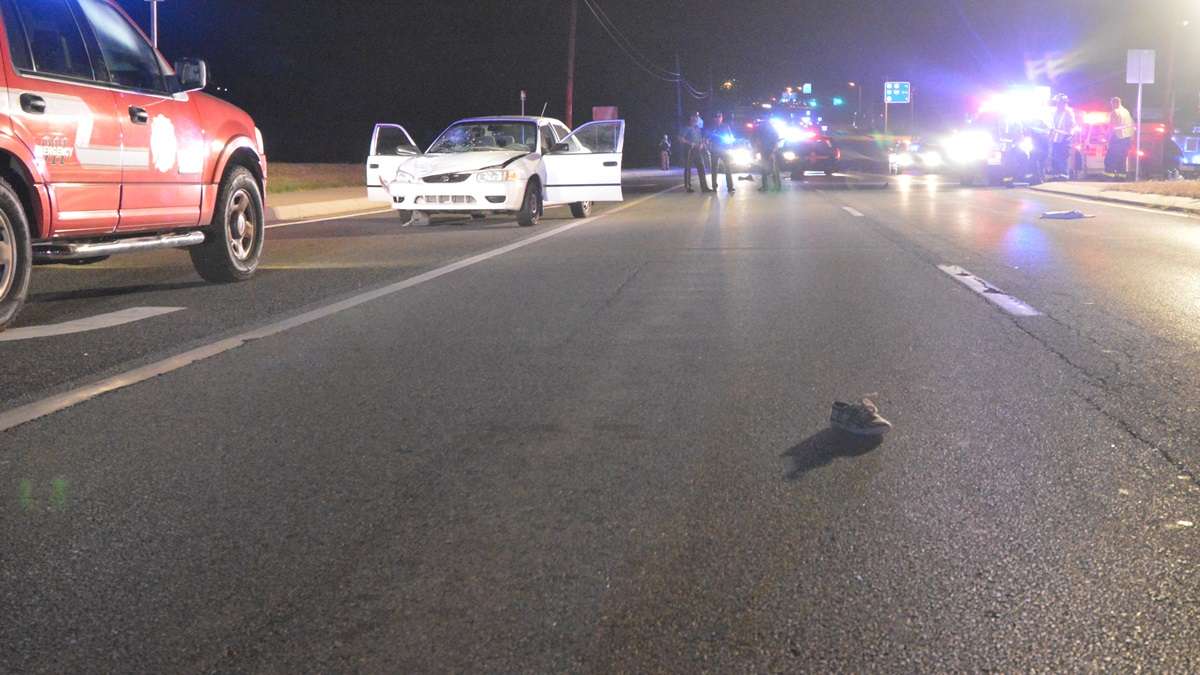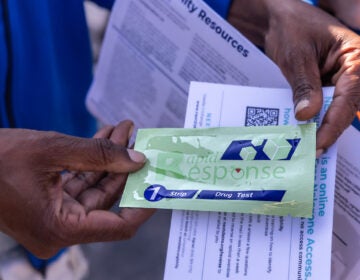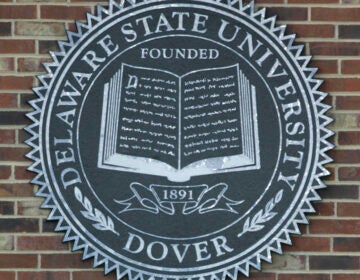Why are Delaware roads so deadly for pedestrians? (video)
-

-

In October, a Wilmington man was killed here on Pulaski Highway after being struck by a car. He was not using a crosswalk. (John Jankowksi/for NewsWorks)
-

-

-

-

While Wilmington gun violence gets lots of headlines, there’s another trend in Delaware claiming lives – 2014 was an especially deadly year for pedestrians and 2015 is already worse.
It’s happened. Again.
Again and again.
More than 30 pedestrians have been killed along Delaware’s roads in 2015. That’s higher than last year’s total of 27.
“Every once and a while there will be a traffic fatality that grabs the public’s attention, but generally speaking these pedestrian fatalities don’t,” said Executive Director of Bike Delaware James Wilson. “This is a problem that has been in the making for decades.”
The State Office of Highway Safety has been drawing attention to the problem through various campaigns in recent years. In 2014, the office demonstrated the dangers for pedestrians in videos that showed a dummy being hit by a car. In 2013, the pedestrian safety campaign borrowed a zombie theme from the popular Walking Dead TV show.
This year, state leaders are issuing more of the same warnings. Last week, they gathered outside Christiana Hospital to announce stepped up enforcement and an ad campaign urging pedestrians and drivers to be more careful. This year’s holiday theme? “It’s the Most Dangerous Time of the Year.”
“We had some challenges in 2014 and in 2015, so we’ve had ongoing enforcement,” said State Police Col. Nathan McQueen. “We want to step up that enforcement, and continue to send the message to make Delaware roadways safe.”
“One of the things the colonel mentioned that I’d like to add on to is being vigilant,” said OHS Director Jana Simpler. “That’s for pedestrians as well as for our drivers.”
But is there something inherent about Delaware’s roads that can be blamed for the high number of pedestrian deaths?
“Yes,” says Wilson. He advocates for better conditions not just for cyclists but for pedestrians too. “Although it’s not reflected in our name, we think it’s part of our job to advocate for pedestrians and there is a huge amount of crossover.”
Oftentimes, when the story of a pedestrian killed in an accident is published online, commenters point their finger at the victim for not using common sense when crossing the road. But Wilson says it’s not that simple.
“Delaware does not have a uniquely moronic class of pedestrians that explains why we’re the deadliest state in America,” Wilson said. “They’re just in a fundamentally dangerous situation. They don’t have a car, and they’re making very small mistakes and their paying a price that’s vastly out of proportion for the mistake they’re making.”
As an example, the way Kirkwood Highway and Route 13 and 40 have developed over the years has created a dangerous situation. Commercial destinations now populate both sides of the high speed roads, but there are very few safe ways for walkers to access them.
“We’ve applied a lot of the same engineering rules that we’ve applied to I-95 and Route 1. Which of course are no pedestrians are being killed on those roads because there’s no destination on each side. But these are not like I-95,” Wilson said. “You know we’ve got bus stops, we’ve got destinations and people do get out here. So those engineering rules that work pretty well on 95 and Rt. 1. Here they’re just a pedestrian death trap.”
To provide better nighttime visibility, DelDOT has added $600,000 worth of new lighting along the 13-40 corridor.
“The roadway was designed to move traffic, move vehicular traffic. And it was really never designed to accommodate the amount of pedestrians that utilize that roadway today,” said Safety Programs Manager at DelDOT Adam Weiser. “We’re looking at ways to try and create a roadway environment that can handle the vehicular volume, but also provide a safe environment for pedestrians.”
DelDOT is also experimenting with a new system to alert drivers when pedestrians are crossing the road. “A rectangular rapid flash beacon, we call them RRFB’s for short,” Wesier said.
One of the first beacons is being installed near White Clay Creek State Park where the heavily used “Tri Valley Trail” crosses Polly Drummond Hill Road. Triggered by pedestrians pushing a button, the beacons make drivers aware of pedestrians trying to cross the road.
“The rectangular rapid flash beacons are a new, innovative style treatment. They use LED strobes that are similar to a light bar on a police vehicle or a construction vehicle where it emits a different flash pattern. And it’s a flash pattern that gets your attention,” Weiser said. “Studies have shown that that flash pattern has really gained the attention of approaching motorists and they’ve seen improved yield at the cross walk conditions.”
While Wilson believes the RRFB’s could help in some spots, the best thing DelDOT could do from now on: “Don’t build any more roads like this.”
WHYY is your source for fact-based, in-depth journalism and information. As a nonprofit organization, we rely on financial support from readers like you. Please give today.





